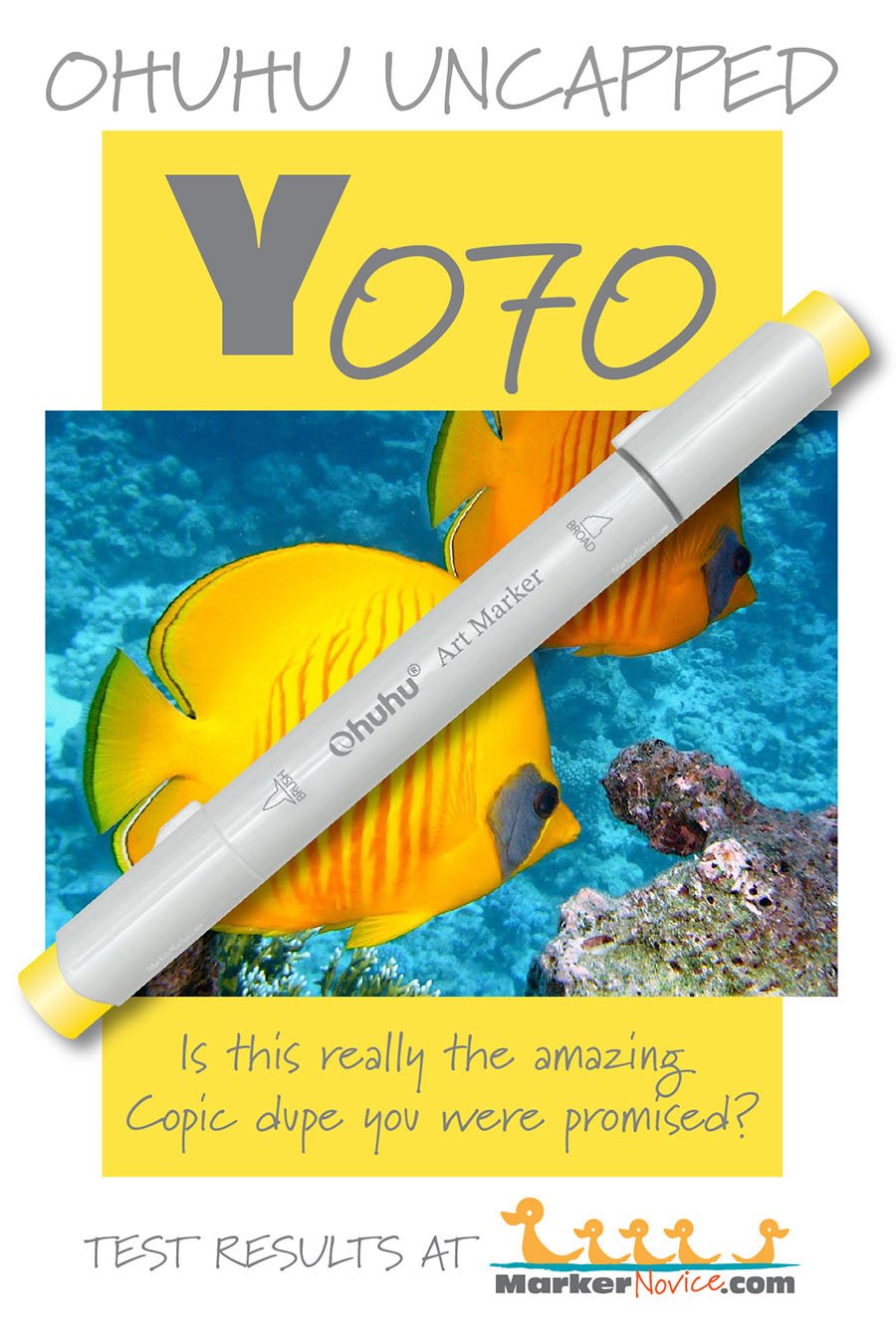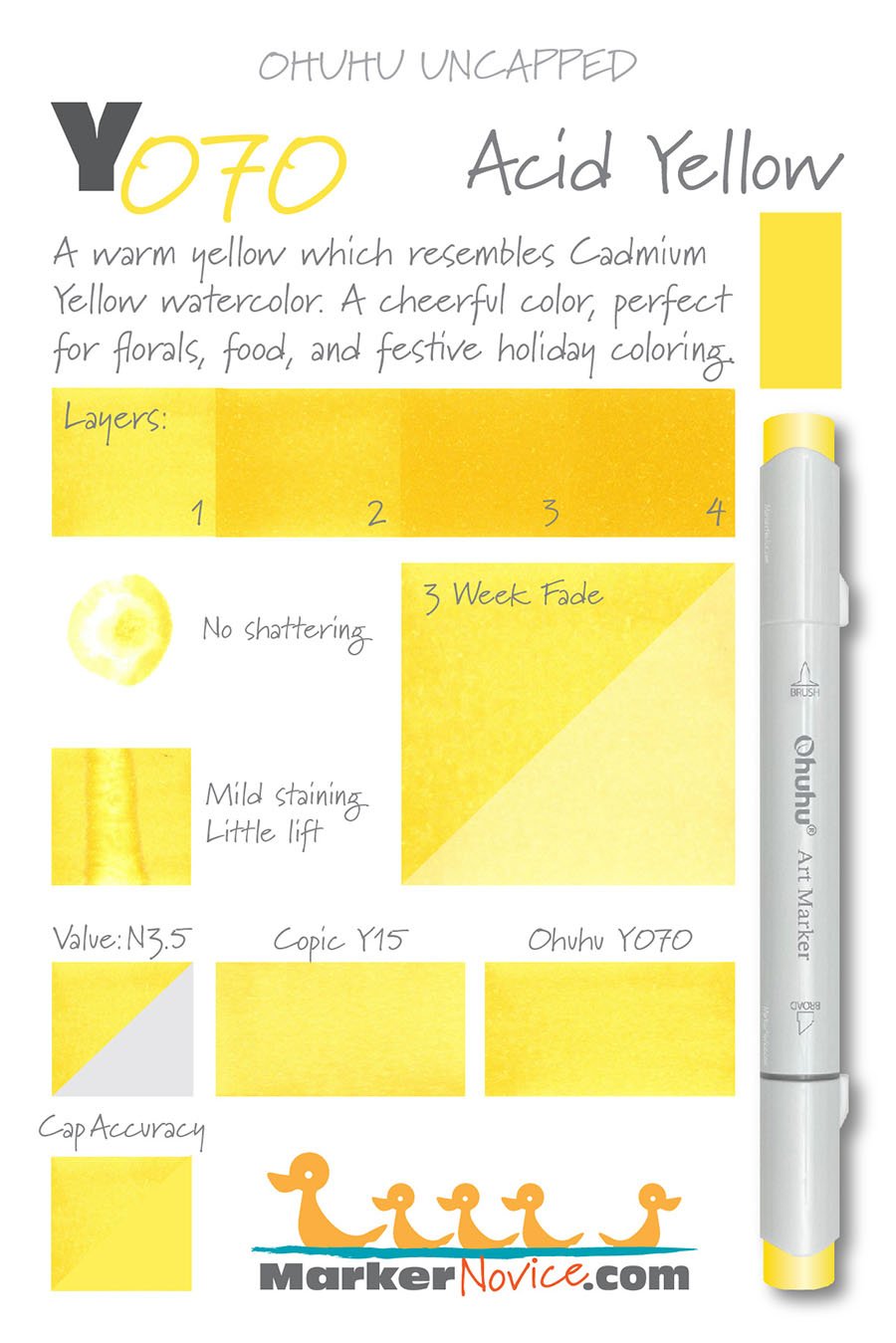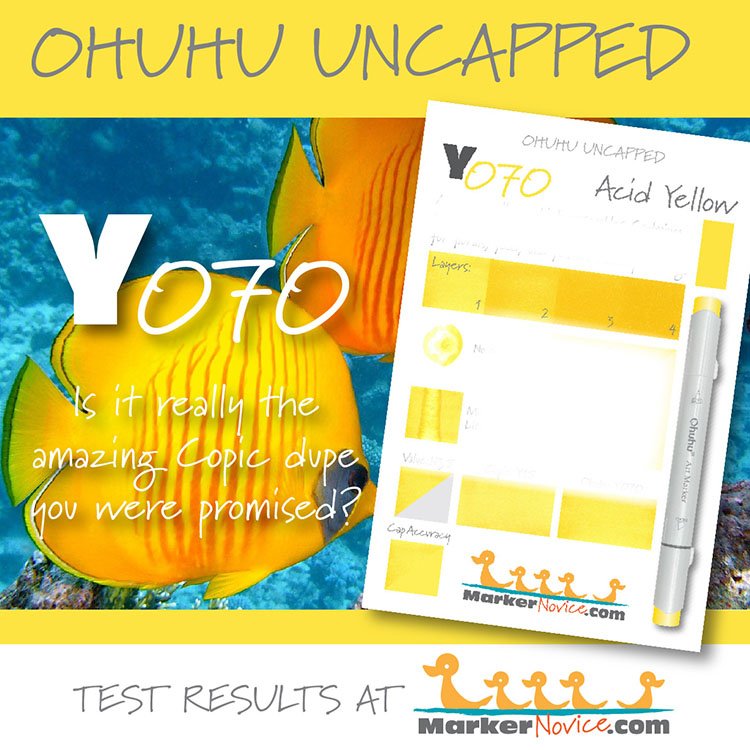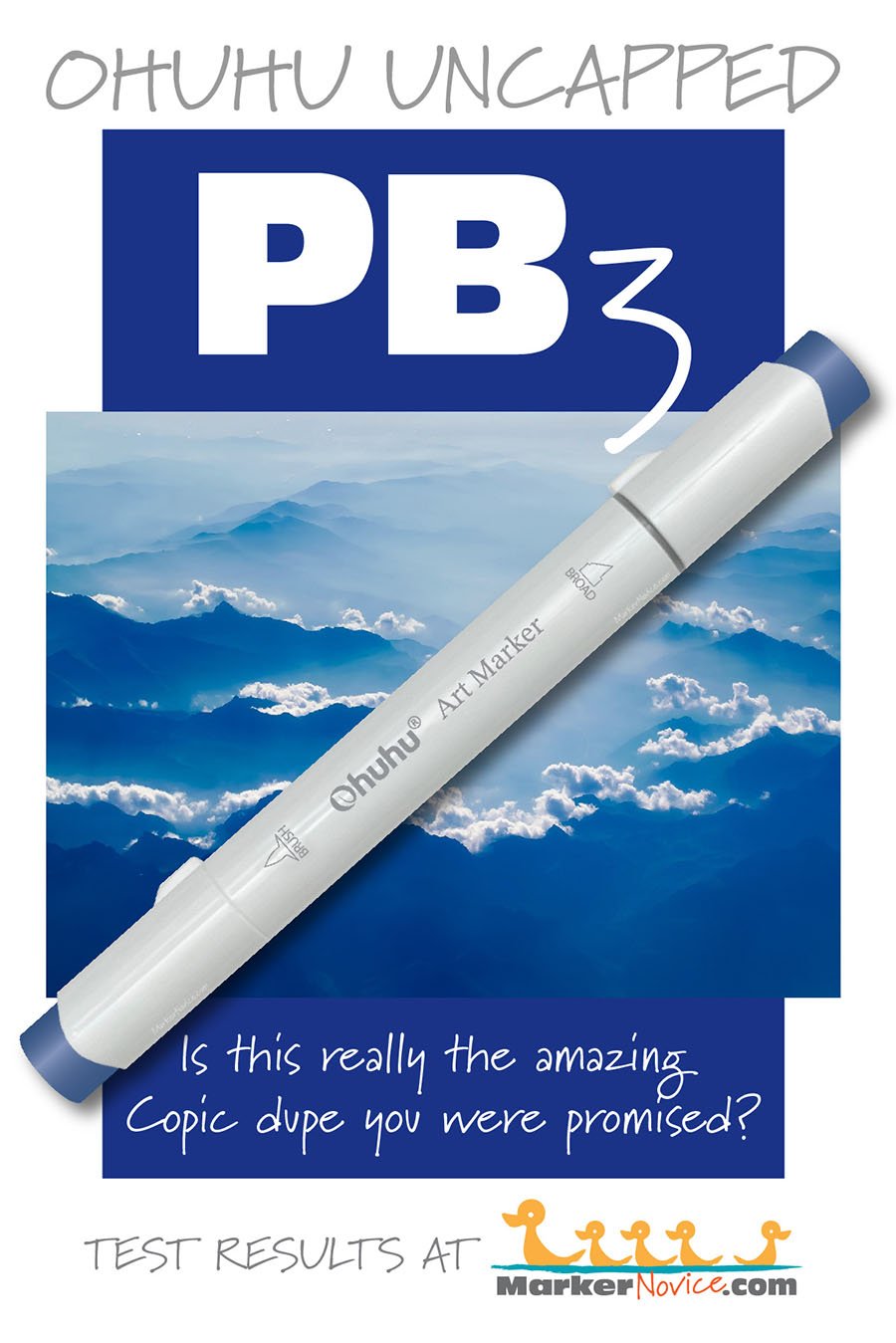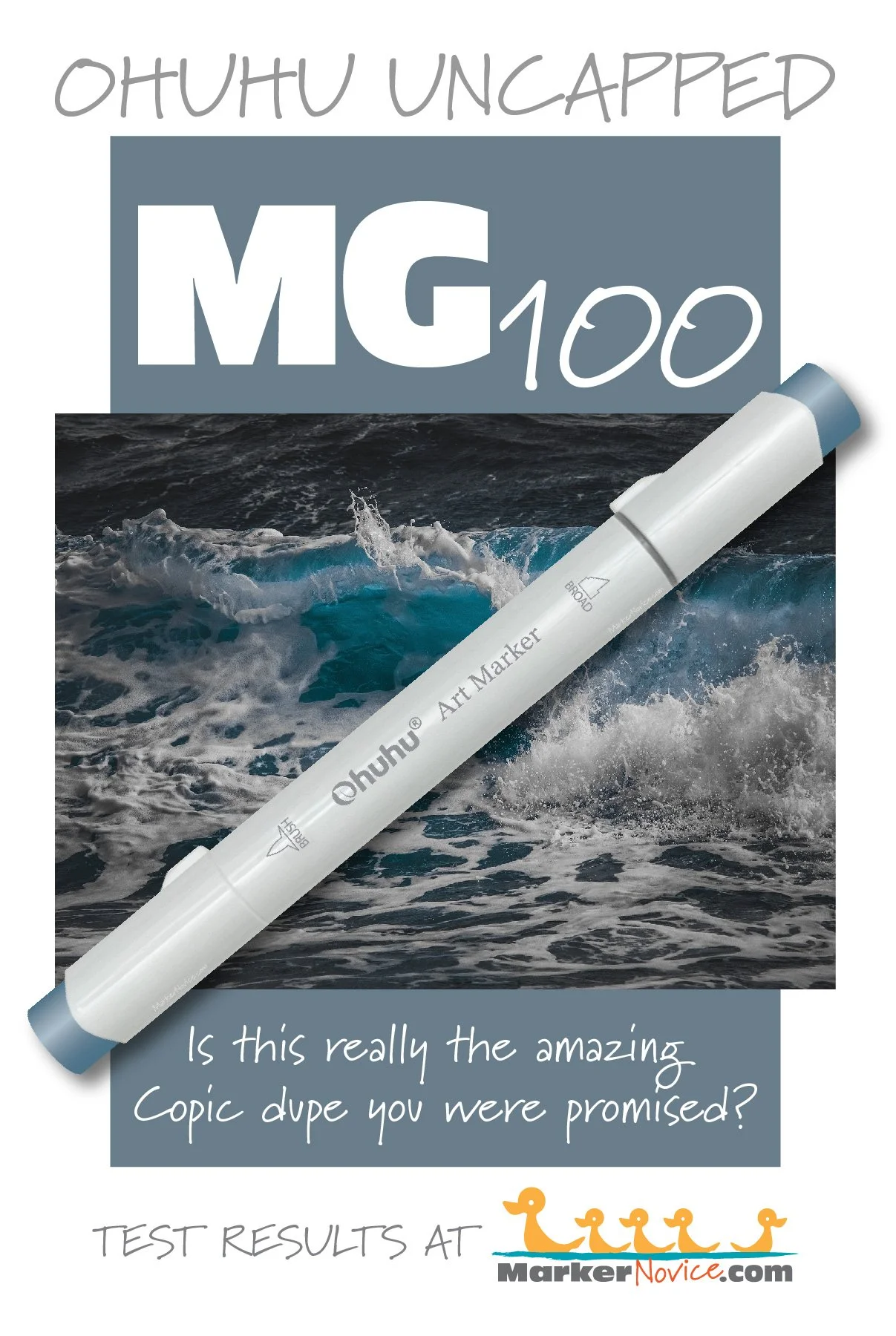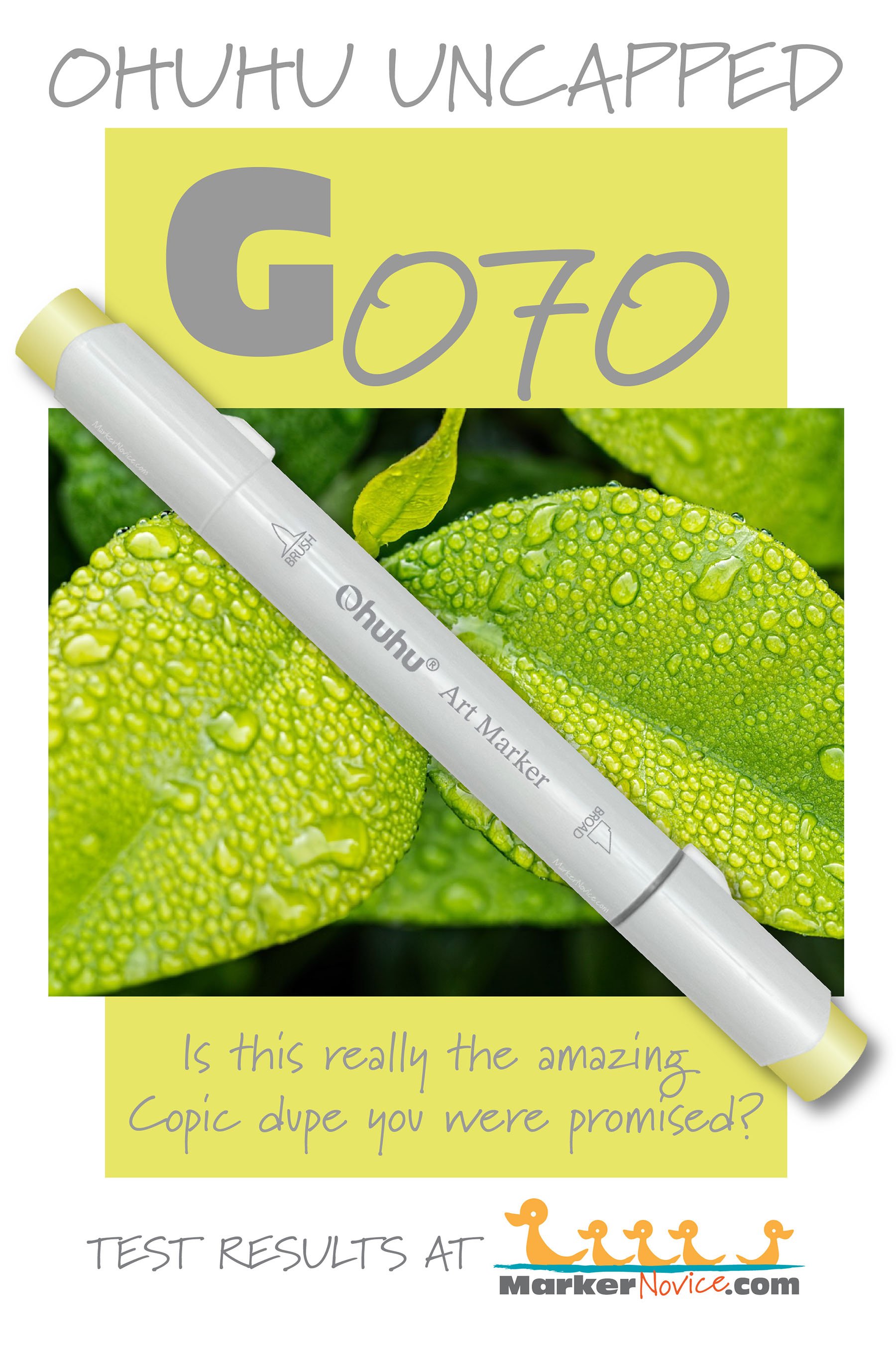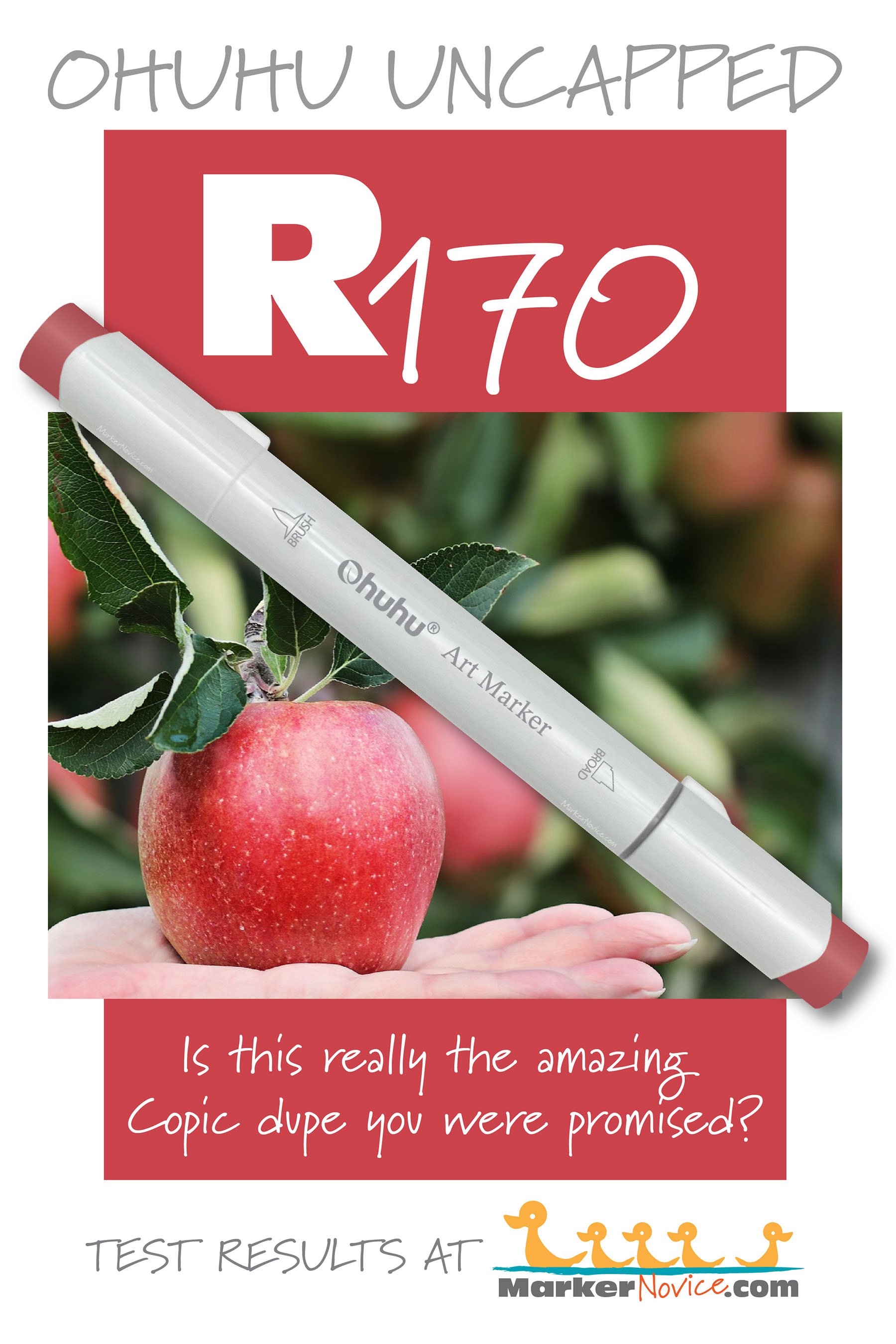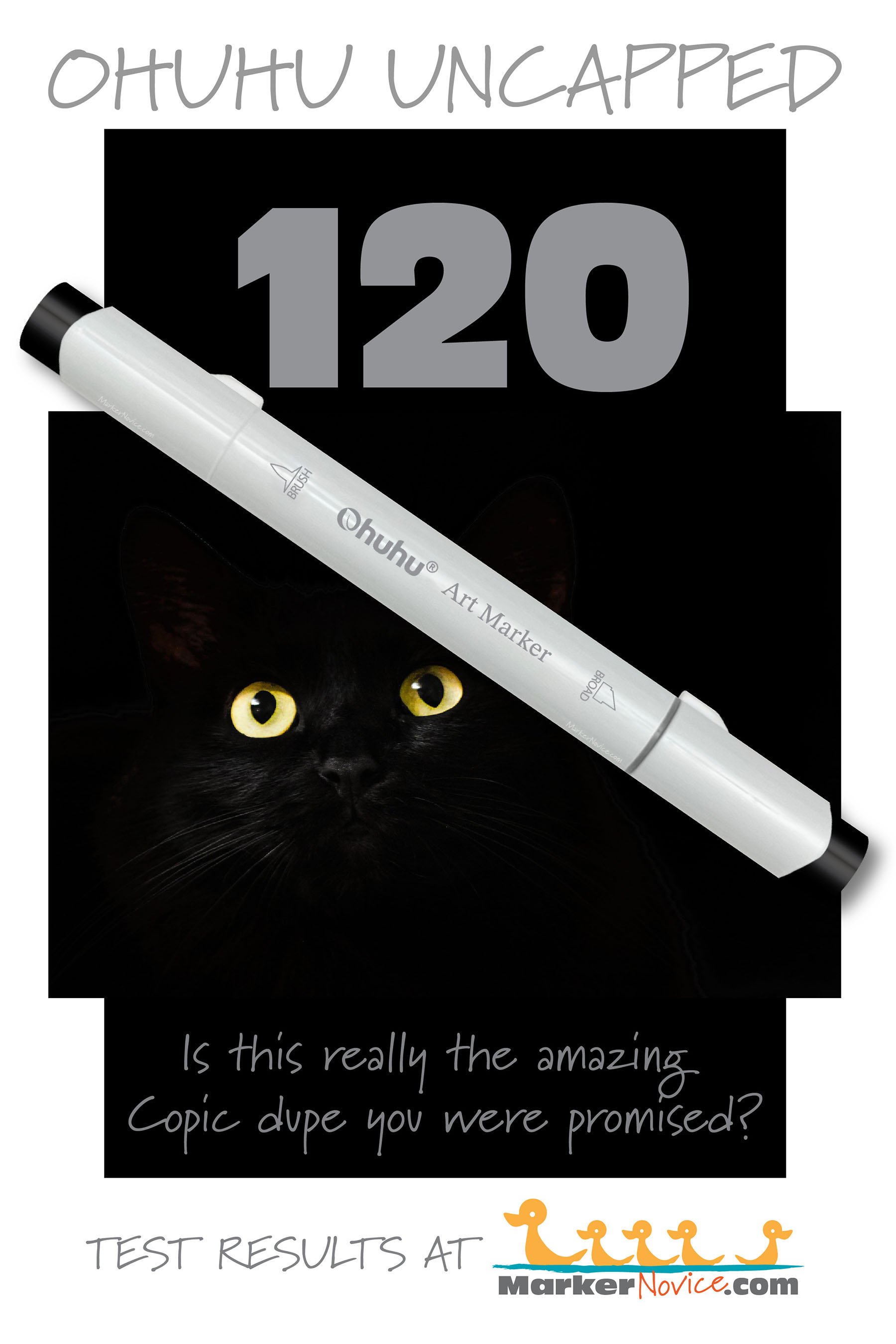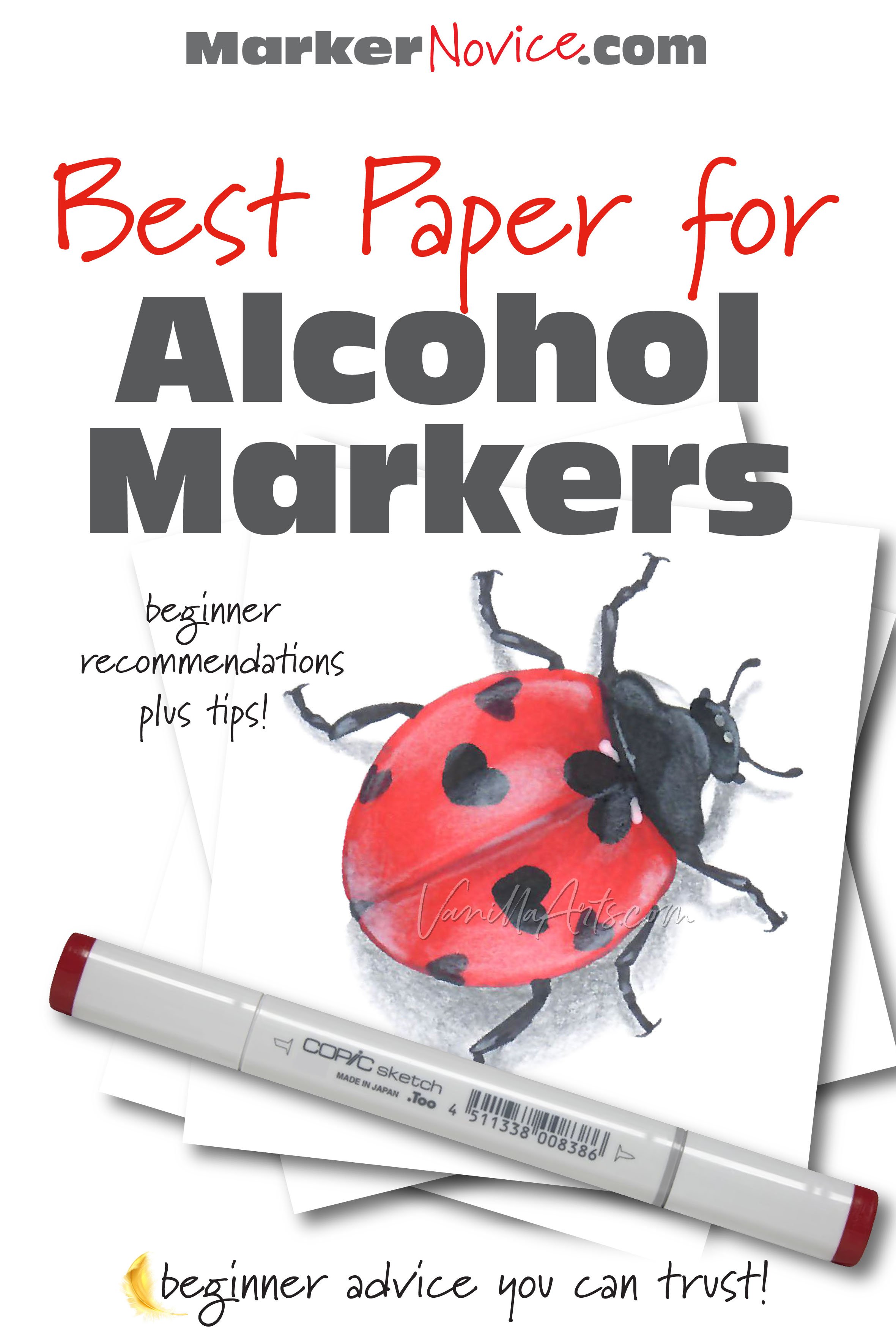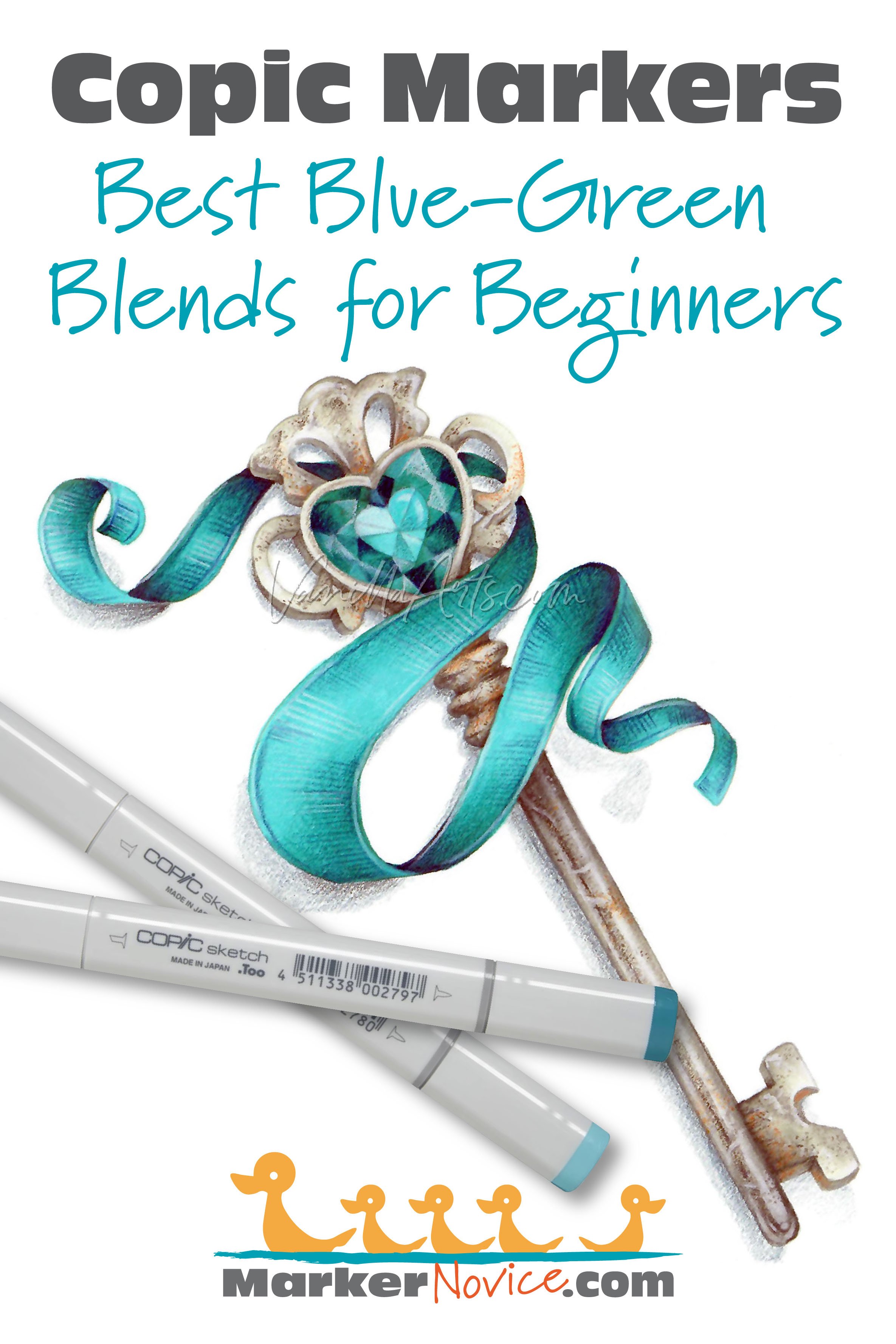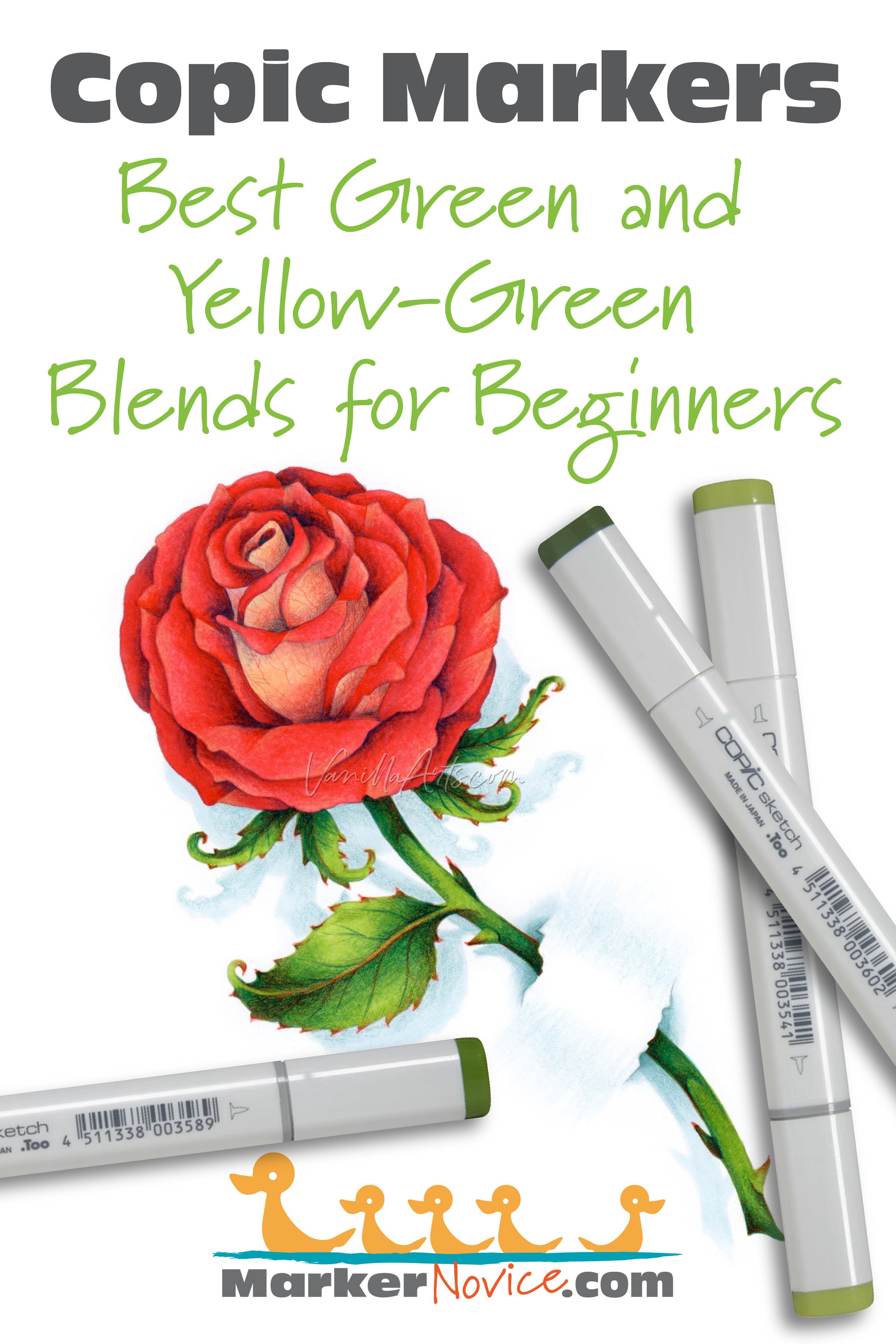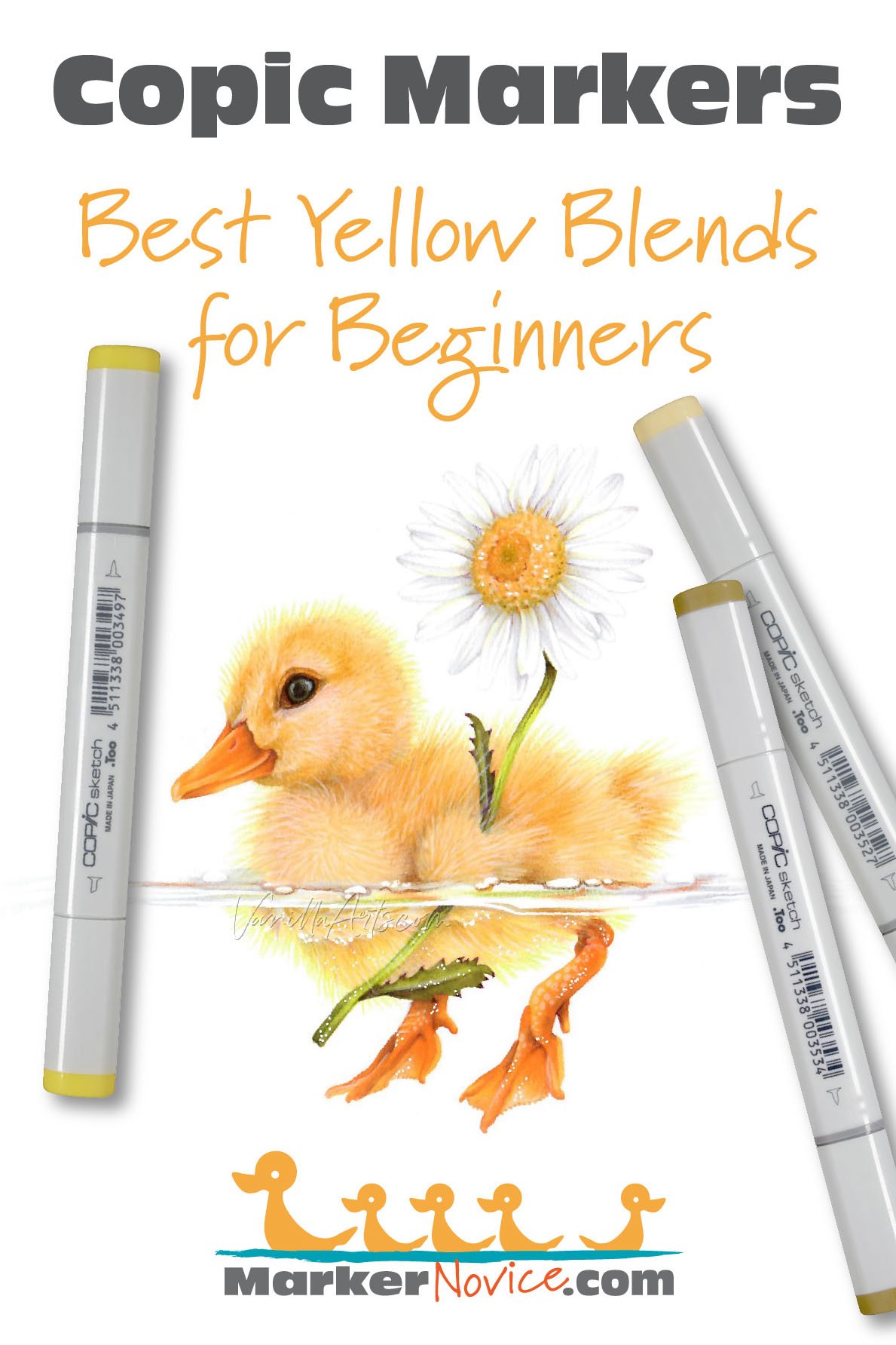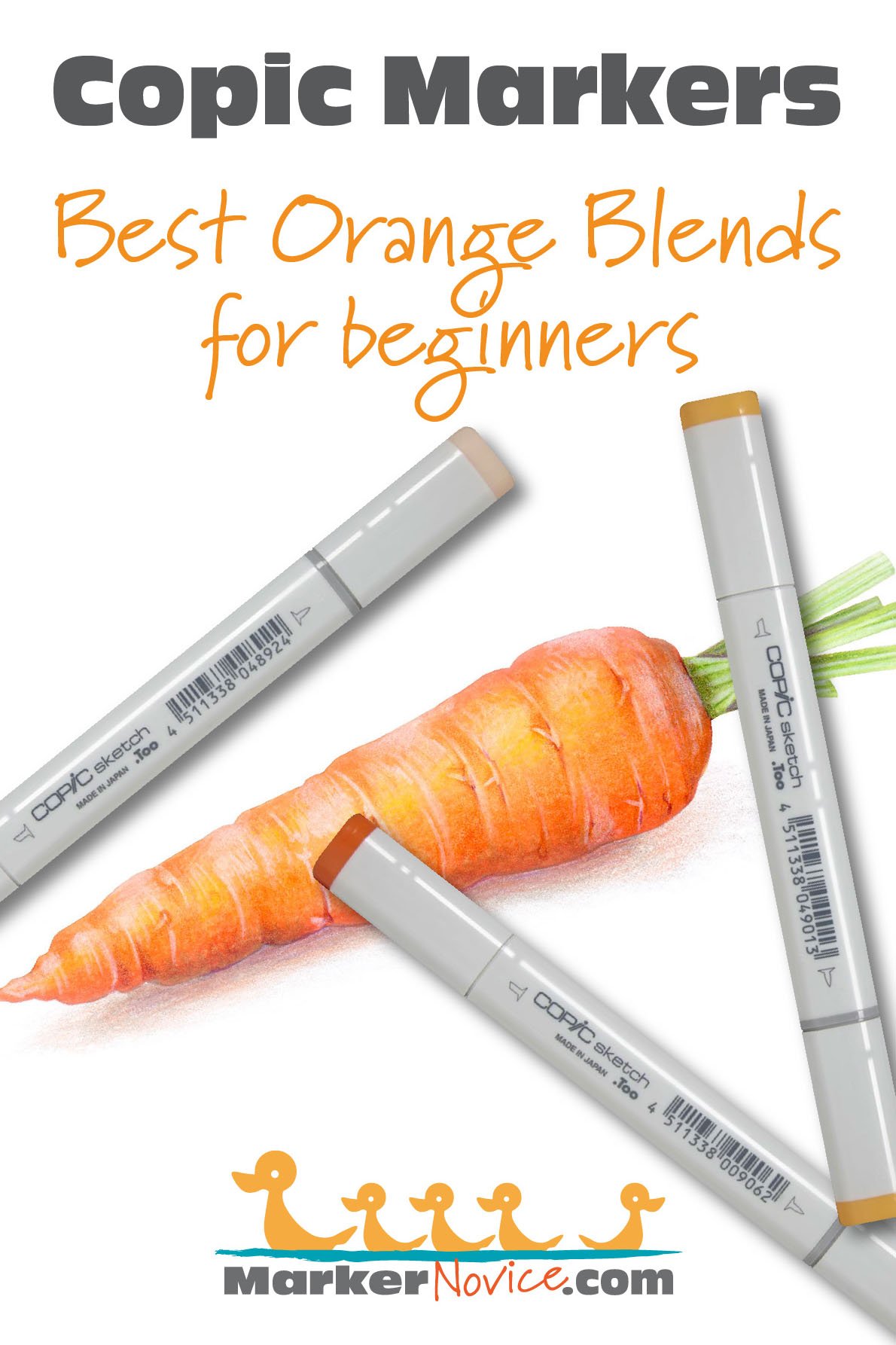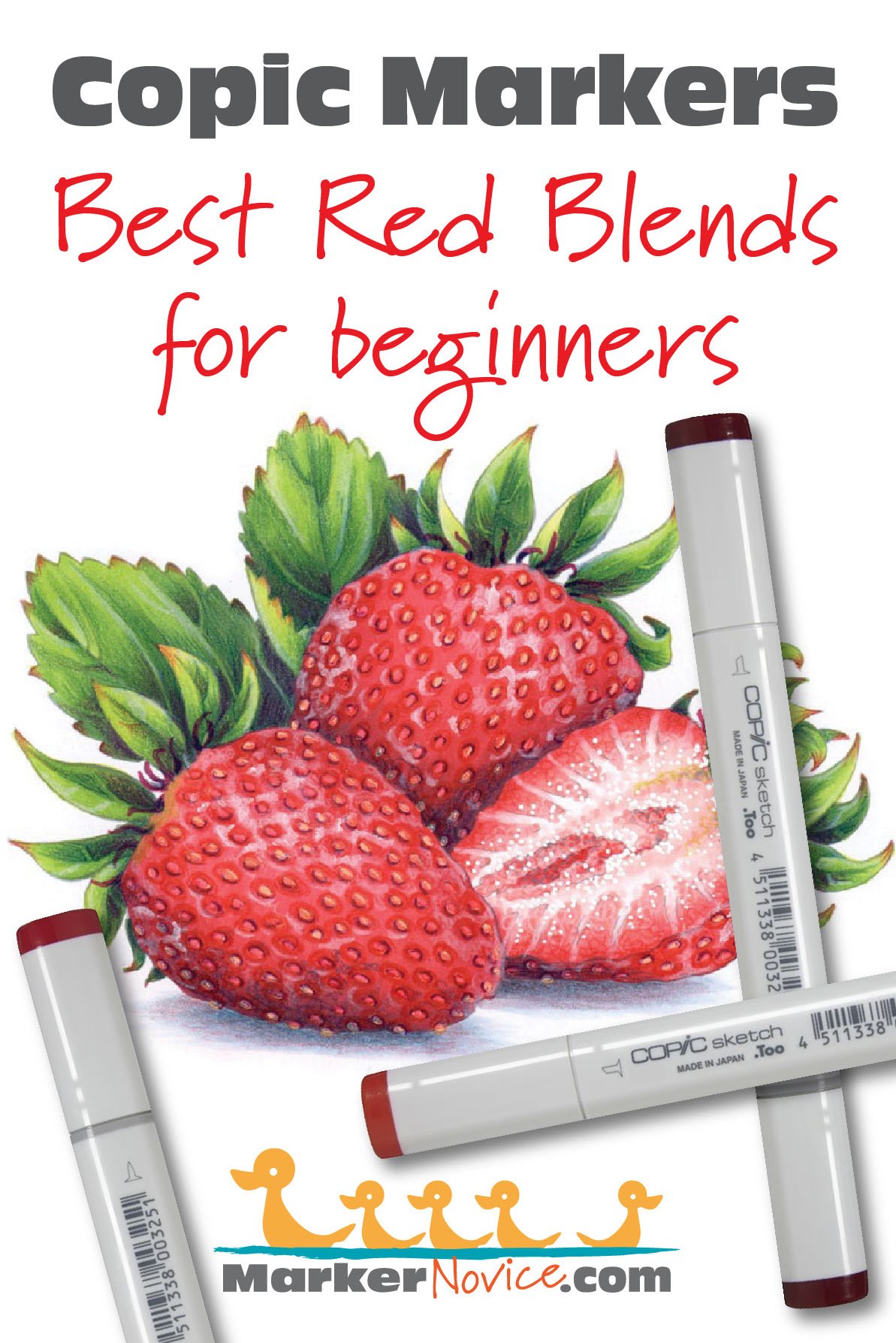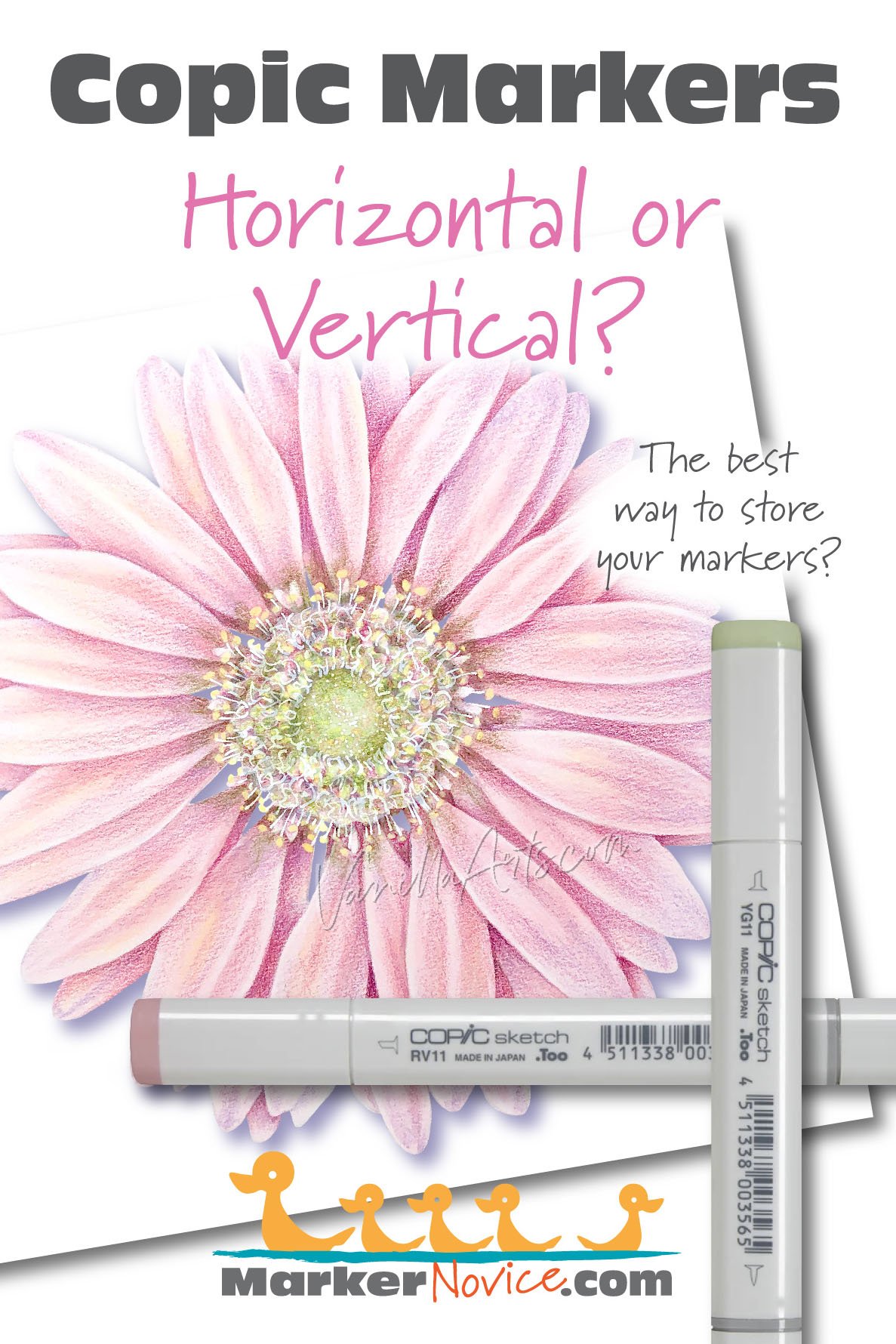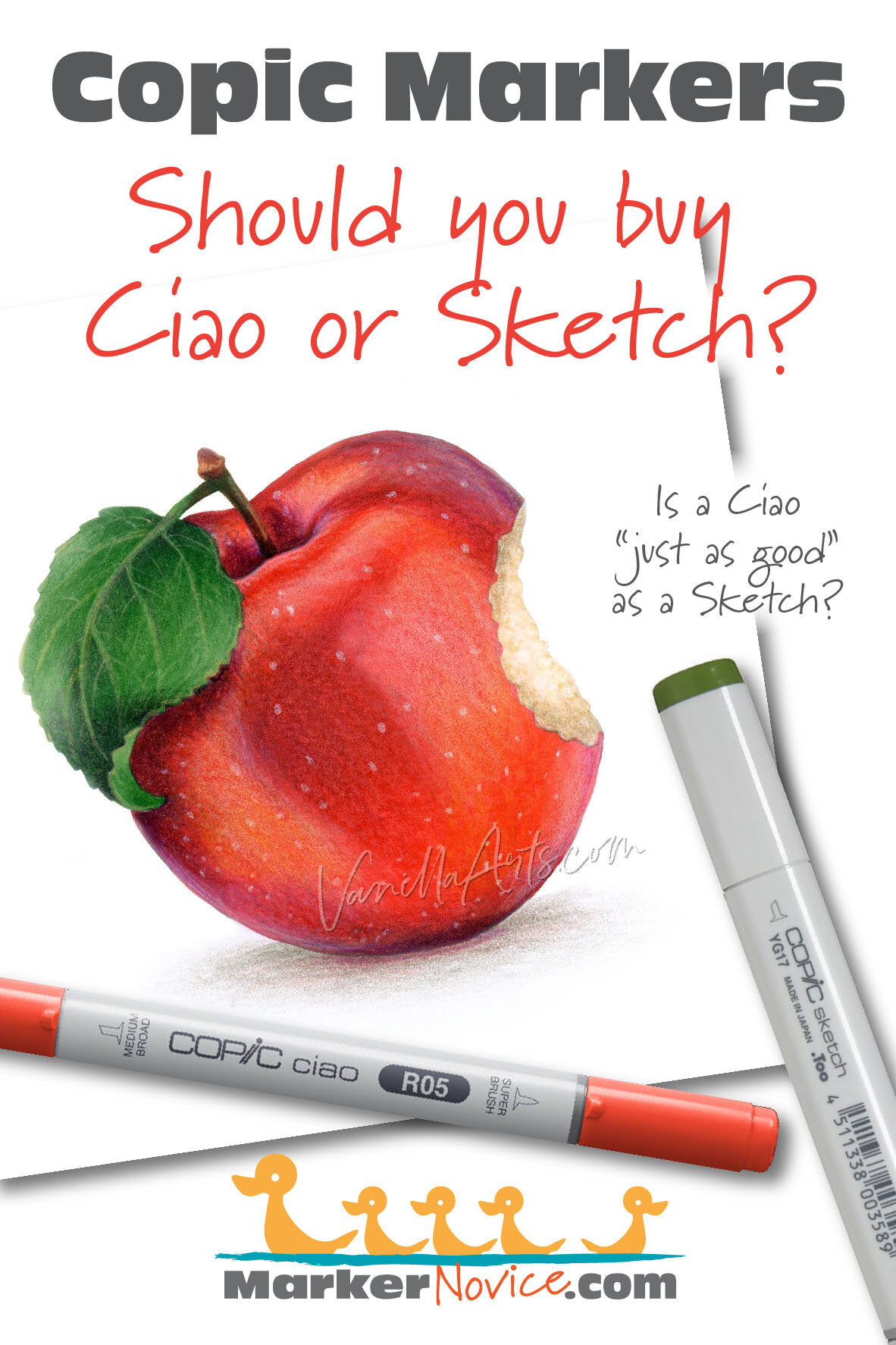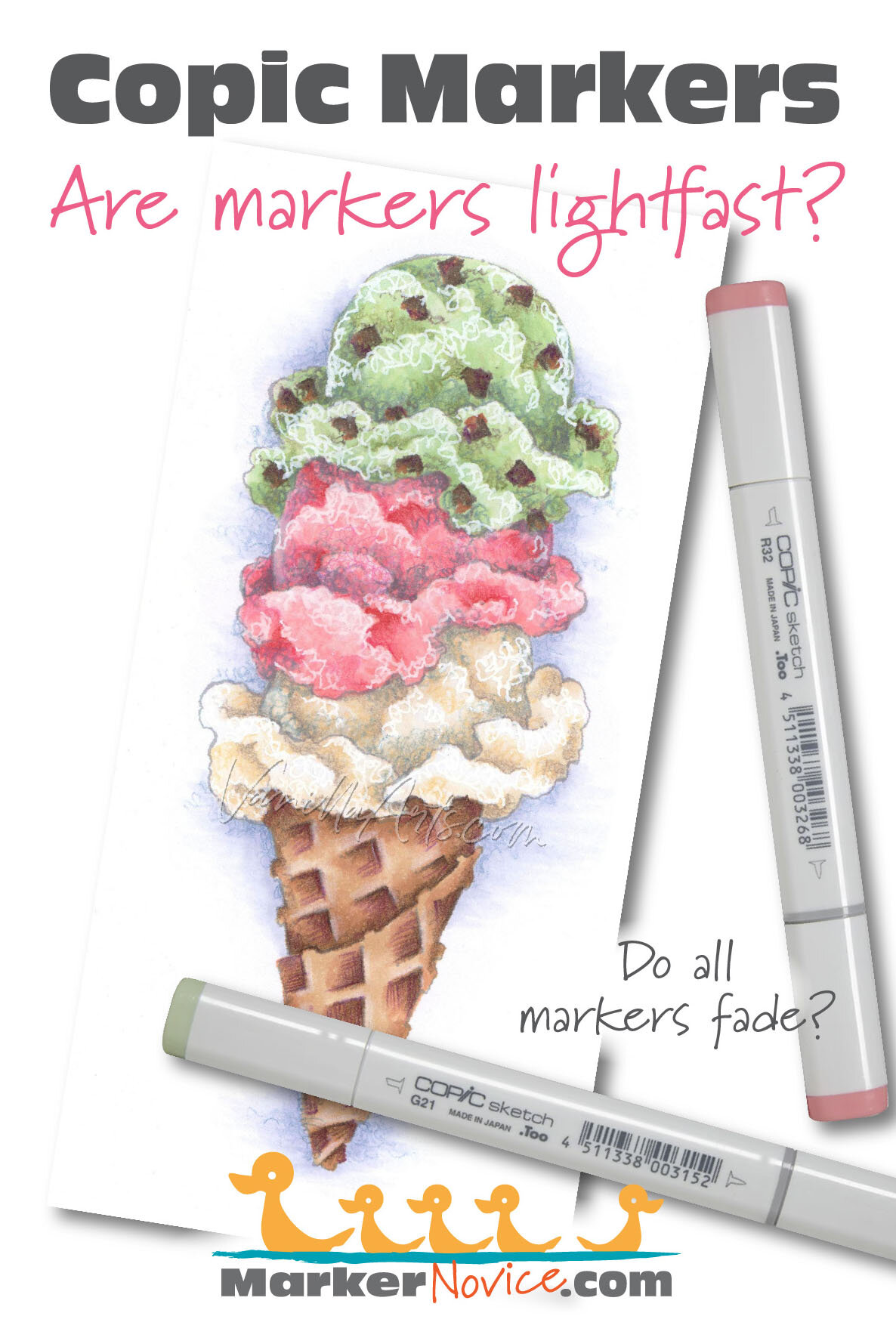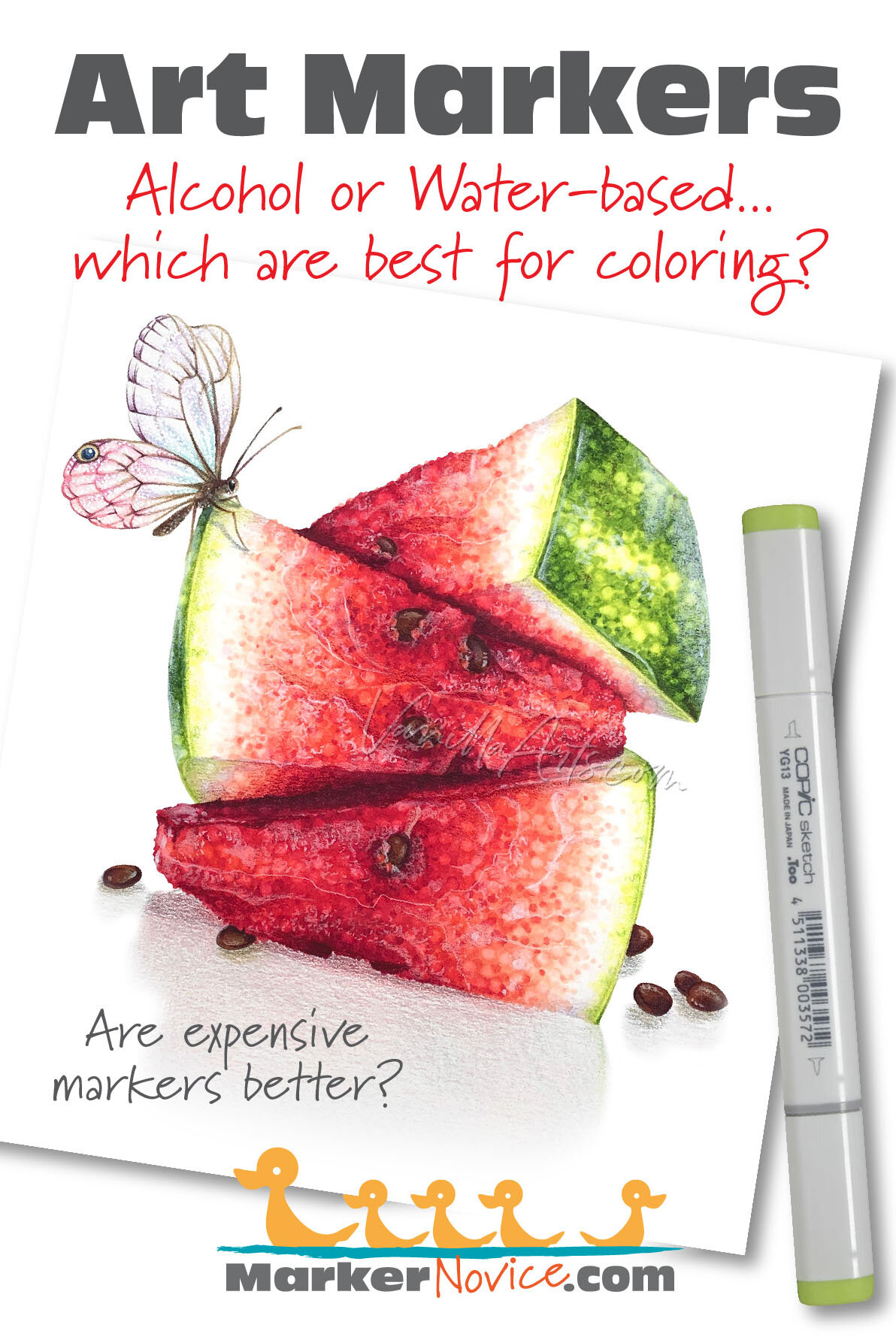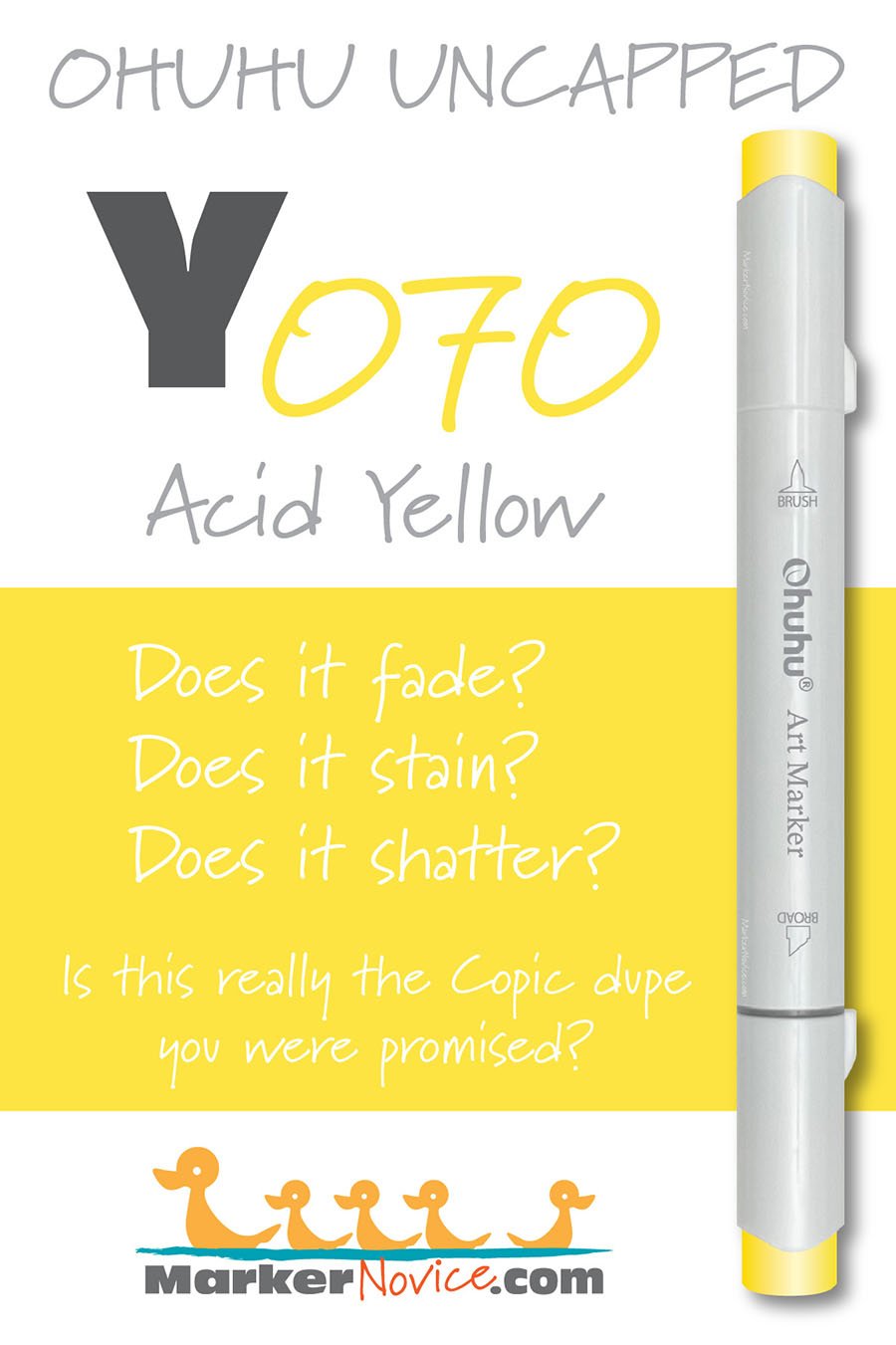You were told “Ohuhu is the Copic slayer! They’re like Copic Markers but better!”
Is it true?
Every Ohuhu Marker has different characteristics based upon its unique ink formula. No matter how great they say the marker is, test results do not lie.
So are Ohuhu markers as great as you’ve heard?
Let’s look at Ohuhu Y070 to find out.
WARNING: Ohuhu markers have numbers on the cap but not on the body of the marker. We do not recommend coloring with both caps off due to the risk of accidentally placing the wrong caps on a marker.
Test results: Ohuhu Y070 Acid Yellow
REFILL WARNING! At this time, Ohuhu does not sell refills for Y070. To date, you must purchase a new marker when your current marker runs dry. See Ohuhu’s current list of refills here.
Temperature: A warm medium yellow
Resemblance: Cadmium Yellow watercolor
Actual Value: N3.5
Unlike Copic, Ohuhu does not measure value— this is a glaring deficiency which makes finding blending combinations harder than it has to be!
All Copics are measured on a Neutral Gray value scale. The last number on the Copic cap indicates the value. We’re using the Copic scale to measure Ohuhu until Ohuhu releases a reliable value scale.
Cap Accuracy: The plastic on an Ohuhu Honolulu Y070 marker is close but noticeably lighter than 1 layer of Y070 ink.
Color Name: “Acid Yellow” is an inaccurate and misleading name for this marker. Acid Yellow is traditionally a green shift yellow (cool yellow). Some acid yellow paints are more green than yellow. This Ohuhu color is the opposite, an orange leaning (warm). There are hundreds of suitable names for this color, it’s ethically wrong to mislead customers this badly.
Many Ohuhu color names indicate a serious lack of English speaking staff at Ohuhu headquarters. It’s nice when one of their marker names actually makes sense.
Copic Substitution: Ohuhu Y070 is similar to Copic’s Y15. They are not the same ink due to the difference in test results but the color appearance is close.
See Copic Y15 test results here.
Note: similar colors rarely behave the same way. Yellow inks in general tend to be easy to blend. In this case, although Y070 an Y15 are different inks, I think they’re equally easy for beginners... but this is the first Ohuhu/Copic sub where I’ve said both markers are about equal. Normally, the Ohuhu version is significantly harder to work with. Keep this in mind for ALL art supplies, it’s not enough to match the color, two similar inks, pencils, or paints can behave radically different in usage.
Buildup: Y070 reaches a maximum value at about 3 coats.
Overinking: I do not recommend using more than 3 coats of Y070. As with most Ohuhu markers, four layers looks exactly like three so why waste the ink.
Shattering: Y070 does not shatter. This is rare for Ohuhu this far in my testing.
Chromatography testing shows this ink’s behavior when it comes in contact with #0 Colorless Blender (solvent). High shattering colors may leak unexpected color when you make corrections or attempt to blend with any color that has a high solvent to colorant ratio. Shattering is not bad, it’s just something to be aware of.
Staining: Y070 is a mildly staining color. This is unusual for yellow but understandable given that it’s a medium color. Darker inks tend to be more staining.
With alcohol markers, a staining ink is generally a sign of a low quality ink. Staining inks bond to the paper fibers and are reluctant to release. Staining inks make blending harder than it has to be!
Lift: Y070 did not lift much from the paper. This is strange for a yellow ink, even a darker yellow. Please note the extreme striping on the sides of the test zone. This is very typical of Ohuhu inks and in my opinion, it’s a sign of poor quality. Be careful as you make corrections to this color as I’m sure you don’t want to accidentally create stripes near the area you were trying to correct.
See staining swatch. Sample was given 6 stripes of #0 Colorless Blender, drying between each stripe. Results indicate how much lifting you can expect.
Lightfast: Y070 faded by about 40% during the test period. This is extreme fading and in my opinion unacceptable, but it’s not unique to Ohuhu. Copic Y15 had a negligible fade during the same time period.
Samples were swatched on X-Press It Blending Card. 1 layer of ink was exposed to windowsill sunlight for 21 days. Approximately 10 hours of sun per day based on weather conditions. Note: we do not recommend displaying original marker art under these conditions.
Ink Color Family: Ohuhu has a small but interesting family of yellow markers. They offer more yellows than Copic and more desaturated yellows than Copic. I’m happy to see a marker company give us something more than 10 yellow highlighters.
The Ohuhu numbering system is complete garbage and doesn’t always make sense. While some may quibble with the inclusion of brownish or greenish colors in the Y family, I’m actually okay with it. Most yellow inks are pretty brown or green in their concentrated form. What I can’t excuse is Y5, a scarlet red marker which matches R17 and Y12 which is similar to E27!
Cap Numbering: Ohuhu Y markers are all over the place. Some have 1 or 2 digits (but are not releated at all), some follow the 0X0 pattern, some are 100s and some are 200s. There’s no rhyme or reason to it— I think the system is either complete carelessness or it’s designed to make it difficult to track marker colors.
The Y0X0 family consists of Y010, 030, 040, 050, 070, and 080.
This is a confused series of unrelated yellows. Two are cool yellows, the rest are warm. One is a highlighter and one is a dirty, desaturated yellow. The yellows are also not arranged by value as 080 is lighter than more all but two. As usual, Ohuhu has made a mess of their numbering system.
As stated above, the Ohuhu numbering system makes no sense. The markers are not arranged in chromatic order so you can not trust the numbers to tell you whether this marker is lighter or darker than other Ohuhu markers with similar numbers.
I’m still early in the Ohuhu testing process. I will add more info to this article as I learn more and when I spot behavioral patterns.
From what I’ve learned so far, I will not be working with Ohuhu markers and I will discourage students from using them in my classes. They’re simply not worth the frustration.

